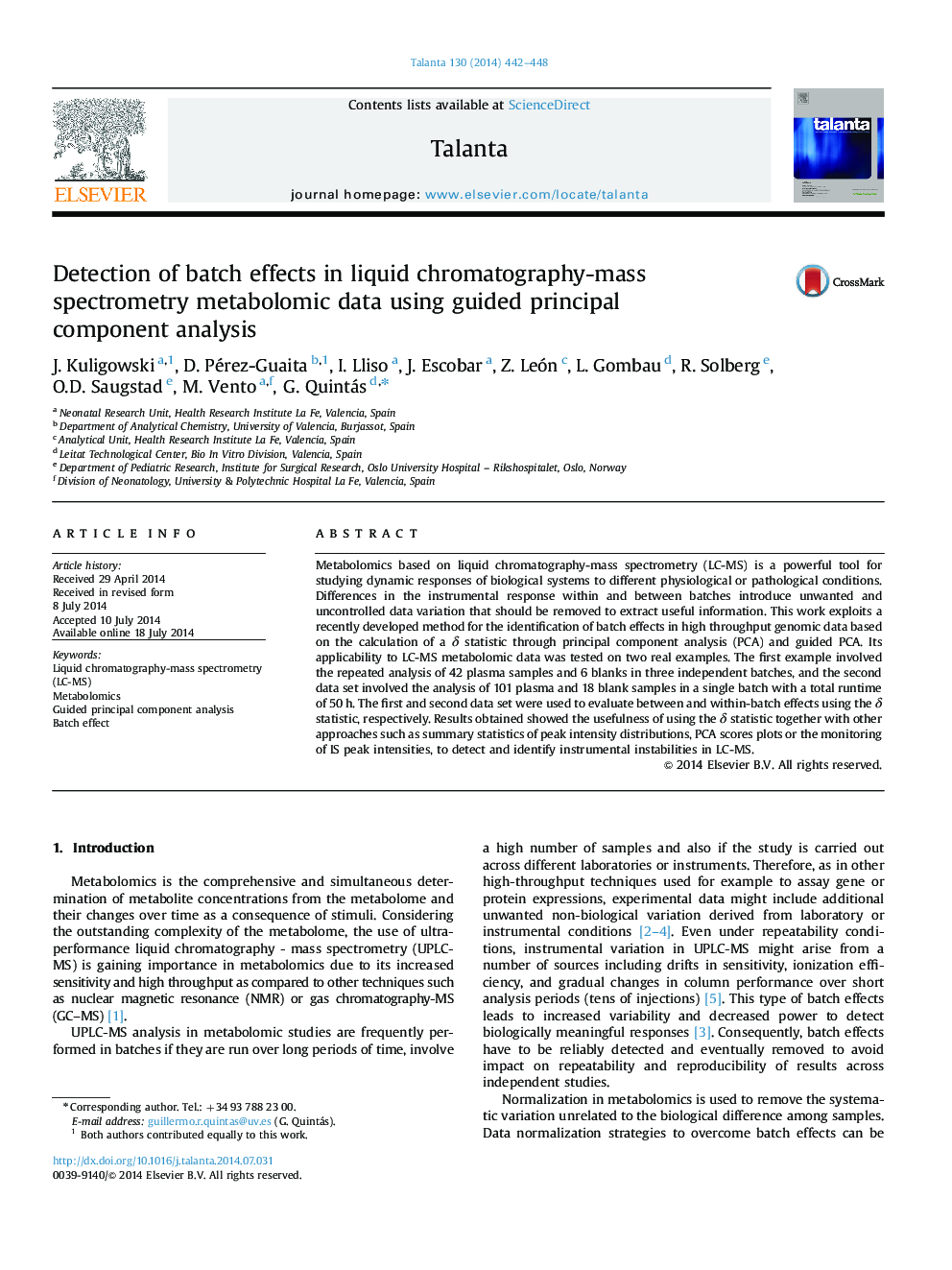| Article ID | Journal | Published Year | Pages | File Type |
|---|---|---|---|---|
| 1243614 | Talanta | 2014 | 7 Pages |
•The statistical significance of batch effects is estimated by PCA and guided PCA.•Analysis of variable subsets provides insight into the source of batch effects.•The δ statistic can be used to detect within and between batch effects.
Metabolomics based on liquid chromatography-mass spectrometry (LC-MS) is a powerful tool for studying dynamic responses of biological systems to different physiological or pathological conditions. Differences in the instrumental response within and between batches introduce unwanted and uncontrolled data variation that should be removed to extract useful information. This work exploits a recently developed method for the identification of batch effects in high throughput genomic data based on the calculation of a δ statistic through principal component analysis (PCA) and guided PCA. Its applicability to LC-MS metabolomic data was tested on two real examples. The first example involved the repeated analysis of 42 plasma samples and 6 blanks in three independent batches, and the second data set involved the analysis of 101 plasma and 18 blank samples in a single batch with a total runtime of 50 h. The first and second data set were used to evaluate between and within-batch effects using the δ statistic, respectively. Results obtained showed the usefulness of using the δ statistic together with other approaches such as summary statistics of peak intensity distributions, PCA scores plots or the monitoring of IS peak intensities, to detect and identify instrumental instabilities in LC-MS.
Graphical abstractFigure optionsDownload full-size imageDownload as PowerPoint slide
